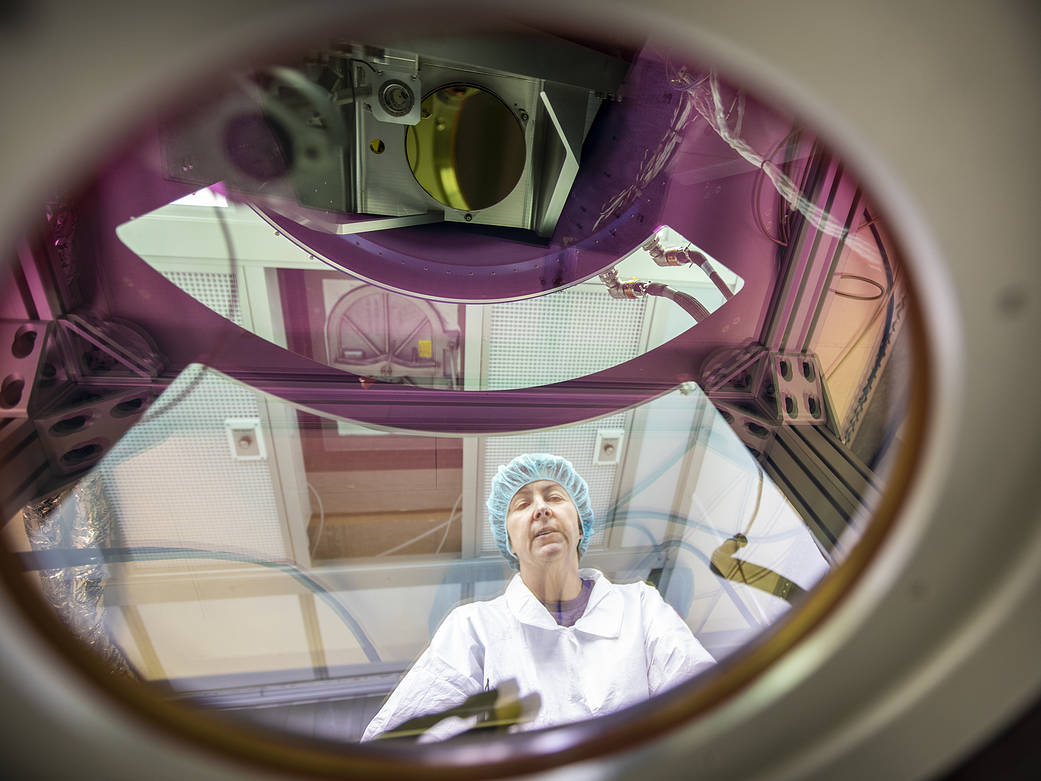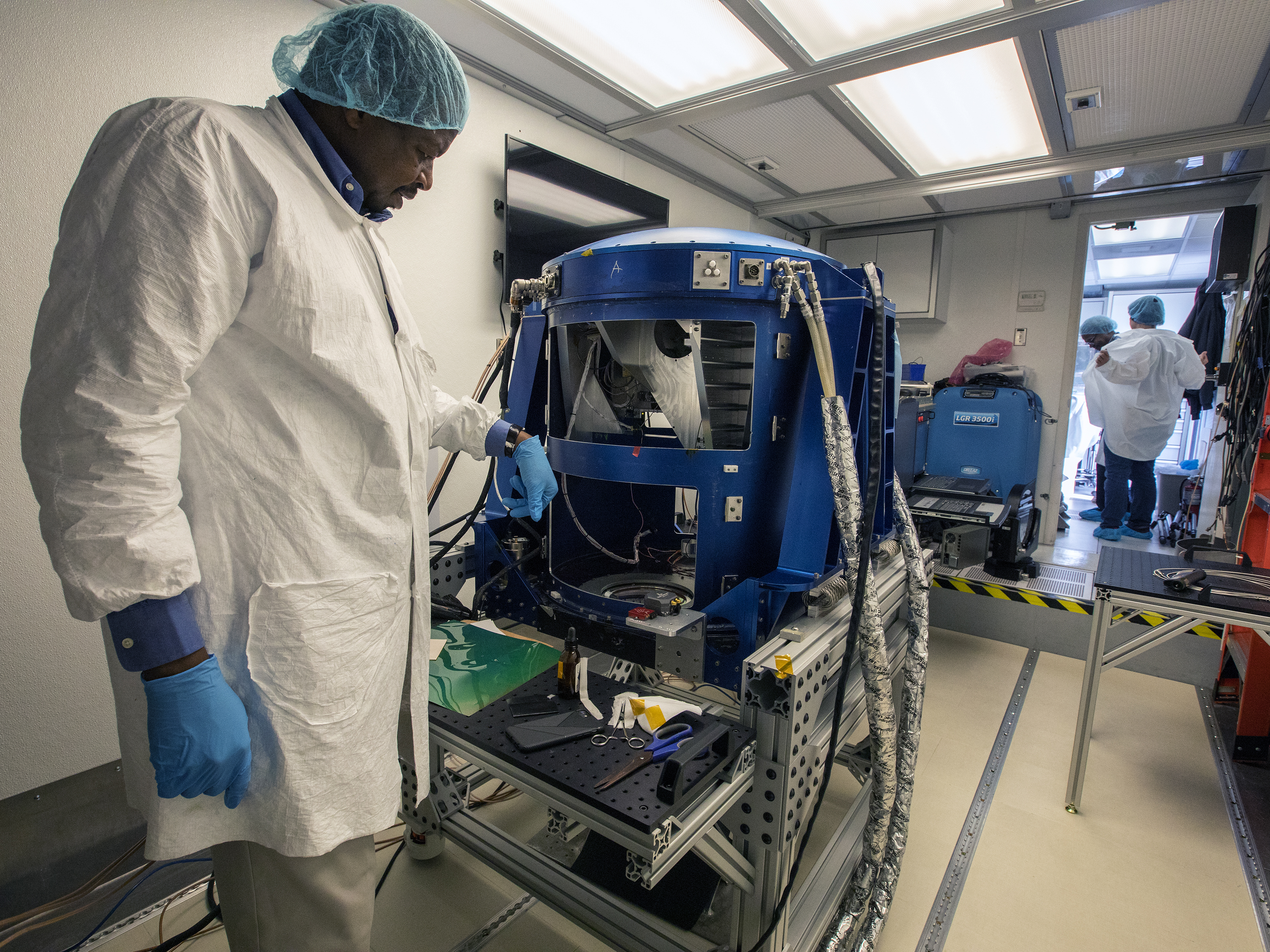Electronics technician Anna Noe makes final checks to the Doppler Aerosol Wind Lidar (DAWN) before it begins a cross-country road trip for use in an upcoming airborne science campaign. Noe is pictured here from the underside of the instrument looking through the exit optical window. Developed at NASA’s Langley Research Center in Hampton, Virginia, DAWN uses laser pulses to take highly accurate measurements of vector wind speed and direction. In the upcoming campaign, which will be based out of NASA’s Armstrong Flight Research Center in Palmdale, California, scientists will use DAWN to validate measurements from Atmospheric Dynamics Mission Aeolus (ADM-Aeolus), a European Space Agency (ESA) satellite that profiles wind speeds across the globe. ADM-Aeolus launched in August 2018. Researchers believe data from the satellite will help improve the accuracy of weather forecasts. Validation flights aboard Armstrong’s DC-8 flying laboratory begin April 15. Langley scientist Michael Kavaya is the principal investigator for DAWN. Langley atmospheric scientist Kristopher Bedka is the mission lead for the flight campaign.
Credit: NASA/David C. Bowman



























